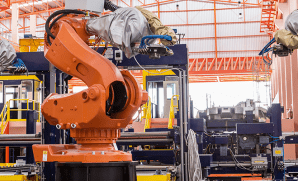Storage Units (SU) in Open Inventory Conversion
Publish Date: May 17, 2018Introduction
Storage unit (SU) management in the Warehouse Management (WM) application element makes it possible to augment warehouse capabilities and regulate material movement using storage units within the warehouse.
A storage unit is a collection of one or several quantities of material, such as a container or a pallet that can be managed as a unit that belongs together within a warehouse. Storage units can be either contain mixed (two or more material items) or homogeneous (containing one material item only).
In all storage units, irrespective of how the materials are stored on wire baskets, standard pallets, or other containers, are assigned an identifier. This number is maintained as the storage unit number in the system.
The application of SU management makes it possible to plan storage units well in advance. A pre-planned storage unit helps users create and store data about storage units in the application component Warehouse Management (WM) before these physically reach the warehouse.
Features
The activation of storage unit management in your system enables you to access various functions. Using SU management, users can:
- Form homogeneous and diverse storage units
- Keep materials into storage using an identification (ID) point
- Confirm stock movements and create transfer orders for storage units
- Transfer complete storage units internally
- Increase stock to existing storage units
In addition, all storage unit management functions are fully integrated with Warehouse Management.
Challenge
A storage unit is a system-wide number. It is not specific to the warehouse and critical to optimize the numbering across multiple warehouses in the organization. The challenge is bringing the existing legacy numbers to SAP AS-IS during open inventory conversion. If the numbers remain unused in SAP, users still need to print new labels and paste on all the pallets and boxes in the warehouse. This involves intensive human effort and leads some chances for inaccurate inventory, especially in larger warehouse implementations.
Applications
Number ranges that can accommodate the existing legacy numbers and assign this to the warehouse. During the cutover, while migrating the inventory into the warehouse, we can set the current number as the last SU number from the legacy system. Previous numbers from this number can be reused while loading the open inventory and future numbers created in SAP.
Benefits
Setting up the right number range saves the excruciating manual effort of reprinting the labels to accommodate the legacy pallet numbers and improves the inventory accuracy for the open inventory migration.
Contact us today for more information and schedule an evaluation!
Velmurugan Arunachalam -Solution Architect – SAP PP/QM @ YASH Technologies
Reference: blogs.sap.com
















